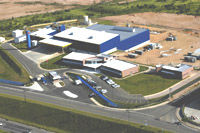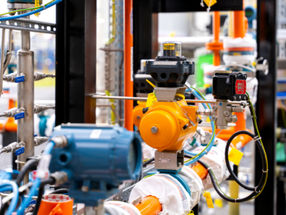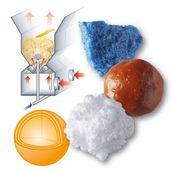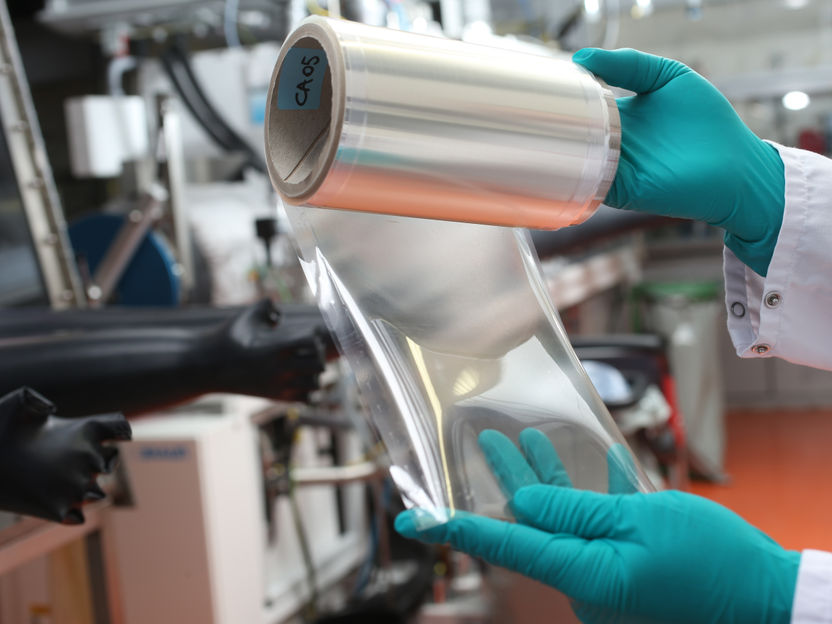Stringent Environmental Regulations Drive Emulsion Polymers Market
Advertisement
The strict environmental regulations present in most European countries is still an important driver of market growth for emulsion polymers, despite the fact that the market has had to cope with numerous challenges such as rising raw material and energy costs recently.
According to latest analysis from Frost & Sullivan, the market is expected to increase from EUR 3.15 billion in 2003 to EUR 4.19 billion in 2010 at a healthy compound annual growth rate (CAGR) of 4.1 per cent. Revenue growth is likely to be price-driven in the short term and volume-driven in the long run.
In addition to having to abide by legislation, end-users are also becoming increasingly aware of the adverse effects of volatile organic compounds (VOC) present in most solvent-based products, a factor that is also impacting the market positively.
"Water-based emulsion polymers are particularly well-placed to take advantage of this situation, due to their almost negligible VOC emissions since water is used as the medium for dispersion in them," remarks Frost & Sullivan Research Analyst Hariharan (http://chemicals.frost.com). "This is expected to be a major driving factor for the growth of emulsions over the long term, especially in applications such as paints and coatings."
However, emulsion manufacturers are currently struggling to cope with skyrocketing prices of raw materials and rapidly increasing energy costs. This trend has been particularly severe in the case of styrene butadiene latex polymers since the prices of both styrene and butadiene have shot up in the recent past. Manufacturers are finding it increasingly difficult to maintain margins and simultaneously satisfy highly price-sensitive customers.
Price increases for raw materials are being exacerbated by their current shortage of supply, and it is also posing a strong logistical challenge to European emulsion manufacturers. This is largely due to the growing demand from fast-developing economies in the Far East as well as a lack of capacity addition in Europe itself. Fortunately, these supply conditions are expected to stabilise in the near future with many major manufacturers increasing their capacities in countries such as China and India.
Faced by these challenges, the emulsions market is likely to go through a period of sustained consolidation as smaller participants get squeezed out of the market, leaving only the larger and financially strong companies operative. These remaining high-volume participants are anticipated to benefit from their huge bargaining power, and thereby ensure the growth of the market in the long term.
Accordingly, in 2003, there were less than 35 active participants with the top ten companies accounting for roughly 77.0 per cent of total market revenue. However, some niche participants also exist that utilise certain unique technologies to cater to specific customer requirements.
Companies that strongly focus on product development are likely to succeed. For instance, the production of innovative multiphase acrylic particles - wherein two or more different polymers are simultaneously allowed in one particle - helps offer higher performance levels. Companies are also evaluating development of custom-designed emulsions as a way of retaining existing customers and gaining new ones.
"New product development calls for companies to invest heavily in research and development (R&D) activities," says Hariharan. "This is especially relevant to participants in the textile industry that faces huge competition from the Far East. Companies are required to differentiate themselves from the competition with higher-value products, and that is only possible through focused R&D."
Among the various end-user industries, the building and construction industry offers the highest potential for growth. This is mainly due to the increased use of emulsions and redispersible powders in mortar modification and similar applications.
Among the products, polyurethane dispersions are the most promising emulsion polymers and are increasingly being used in various high-performance applications such as original equipment manufacturing coatings and structural adhesives. These polymers are forecast to grow at a CAGR of 5.7 per cent from 2004 to 2010.
Germany is the largest regional market in Europe, having contributed about 26.2 per cent of total revenue in 2003. Although stagnant economic development in the country has restrained overall market growth during the last two years, various structural reforms by the government and corporate restructuring are likely to restore the German market to economic health and help drive demand for emulsions.
In the meanwhile, strong growth in the United Kingdom and Ireland - which jointly constitute the second biggest market in terms of revenue - are expected to be a key driver to market expansion and to partially compensate for the lacklustre performance of Germany over the next few years.
If you are interested in a overview of the analysis providing an introduction, challenges and latest coverage of the European Markets for Emulsion Polymers - then press our "Contact/info" Button below.


































































